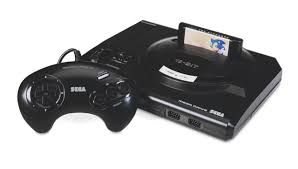- 07850 856585
- info@8bitbeyond.com
- Store Location
- Sign in or Register
-
Currencies
- AED
- AFN
- ALL
- AMD
- ANG
- AUD
- AWG
- AZN
- BAM
- BBD
- BDT
- BGN
- BIF
- BND
- BOB
- BSD
- BWP
- BZD
- CAD
- CDF
- CHF
- CNY
- CRC
- CVE
- CZK
- DJF
- DKK
- DOP
- DZD
- EGP
- ETB
- EUR
- FJD
- FKP
- GBP
- GMD
- GNF
- GTQ
- GYD
- HKD
- HNL
- HUF
- IDR
- ILS
- INR
- ISK
- JMD
- JPY
- KES
- KGS
- KHR
- KMF
- KRW
- KYD
- KZT
- LAK
- LBP
- LKR
- MAD
- MDL
- MKD
- MMK
- MNT
- MOP
- MUR
- MVR
- MWK
- MYR
- NGN
- NIO
- NPR
- NZD
- PEN
- PGK
- PHP
- PKR
- PLN
- PYG
- QAR
- RON
- RSD
- RWF
- SAR
- SBD
- SEK
- SGD
- SHP
- SLL
- STD
- THB
- TJS
- TOP
- TTD
- TWD
- TZS
- UAH
- UGX
- USD
- UYU
- UZS
- VND
- VUV
- WST
- XAF
- XCD
- XOF
- XPF
- YER
L/A- en
- Home
- All Collections
- Sega
Sega
Sega
Sega through history
Sega Founded 3rd June 1960 in Hawaii, Entry into the console market took place in 1982 through the sg-1000. This came about from a downturn in their arcade business. Over the years Sega's popularity grew along with the market for video games. After the launch of Genesis, Sega sought a new flagship series to compete with Nintendo's Mario series. Its new character, Sonic the Hedgehog, went on to feature in one of the best-selling video game franchises in history. Sonic the Hedgehog began with a tech demo created by Yuji Naka involving a fast-moving character rolling in a ball through a winding tube; this was fleshed out with Naoto Ohshima's character design and levels conceived by designer Hirokazu Yasuhara. Sonic's color was chosen to match Sega's cobalt blue logo; his shoes were inspired by Michael Jackson's boots, and his personality by Bill Clinton's "can-do" attitude.
In 1990, Sega launched the Game Gear, a handheld console, to compete against Nintendo's Game Boy. The Game Gear was designed as a portable version of the Master System and featured a full-color screen, in contrast to the monochrome Game Boy screen. Due to its short battery life, lack of original games, and weak support from Sega, the Game Gear did not surpass the Game Boy, having sold approximately 11 million units. Sega launched the Mega-CD in Japan on December 1, 1991, initially retailing at JP¥49,800. The add-on uses CD-ROM technology. Further features include a second, faster processor, vastly expanded system memory, a graphics chip that performed scaling and rotation similar to Sega's arcade games, and another sound chip. In North America, it was renamed the Sega CD and launched on October 15, 1992, with a retail price of US$299. It was released in Europe as the Mega-CD in 1993. The Mega-CD sold only 100,000 units during its first year in Japan, falling well below expectations. Sega did have success with arcade games; in 1992 and 1993, the new Sega Model 1 arcade system board showcased in-house development studio Sega AM2's Virtua Racing and Virtua Fighter (the first 3D fighting game), which played a crucial role in popularizing 3D polygonal graphics.




